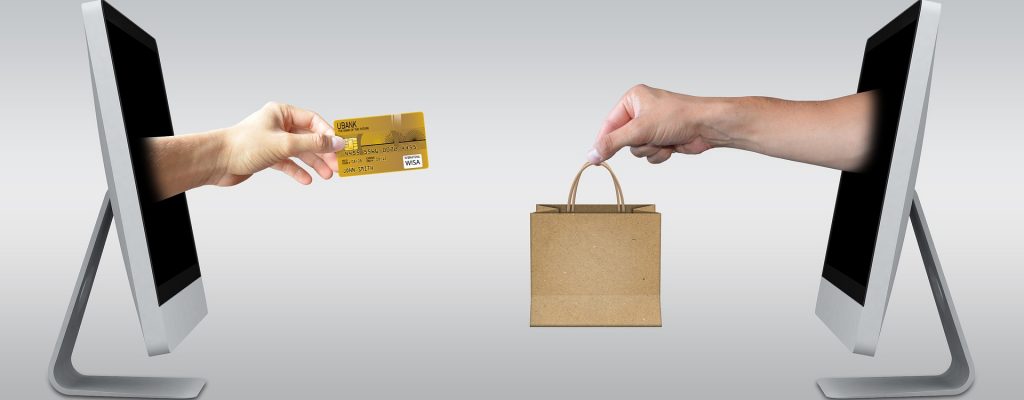Yup, that actually was the opening sentence of a recent conversation.
I have been a co-organizer and trainer of the Austin WordPress Meetup since 2010. For the two years before that, I sat in the back of the room every month learning everything I could about how to use WordPress.
I try to stay after each meetup to answer questions for the folks that were too shy to ask during the class. Some questions are intensely specific, usually involving how the ‘WordPress White Screen of Death’ came to visit their laptop. These types of questions are easy to address and fix…happy WPATX member toddles off to ‘Press another day.
Lately, the questions that concern me are the vague ones — the “Miracle Occurs HERE” assumptions that many of our members have voiced about starting a business online. eCommerce has become a very hot topic. Fueled by YouTube videos, discussions of Etsy and Shopify pop-up in the conversations asking, “Can we do that with WooCommerce?” I find my self speaking to a small circle of attendees, responding, “Yes, However…”
As more of our members are considering various eCommerce ventures, I find myself concerned that people are not approaching building an eCommerce business with the same level of business planning they would employ for a brick and mortar venture. Before my WordPress life, I served as counselor with the Colorado State Small Business Development Center. My specialty was the Minority and Women Business start-ups. I worry that people confuse a low barrier to entry to a negligible cost of maintenance and operations.
An eCommerce shop still requires a business plan, startup capital, and all the other legal considerations of a traditional business.
Before You Start Your Online Store
Bless your hearts, I’ve talked to enough of you to know that you nurture the comforting vision of working from your laptop, possibly in an exotic location, while your online store rakes in sales on auto-pilot.
The phrase “online” is too general, and just so you know, some ‘Brick and Mortar Rules’ still apply. I’m not saying the YouTubers are fibbing, I’m just saying there is some foundational work that needs to happen before you take that ‘Selfie’ by the pools and post it to Facebook.
1. Finding your Niche — Marketing to everyone means marketing to no one. You need to know what you want to sell to whom, and why they would want to buy it. Until you have drilled that down, you can’t focus your efforts on a unique target market.
You may determine your niche is a distinct demographic of potential buyers who would most benefit from your product or service. These potential customers may be from a specific geographic area or have a unique lifestyle, belong to a specific culture, maybe they belong to a certain category of professionals. Your ideal customer may be preparing for a special occasion or activity. Whoever they are, wherever they are, you need to know them and their needs before you assume to “sell” them.
Choosing your niche impacts a lot of things, including…
- Your sales figures
- How much effort you’ll have to put into customer support
- Whether or not you’ll have repeat customers
This is why it’s important to take some time to think strategically about the niche you have chosen.
2. The beginning of wisdom is to call things by their right names.
Don’t name your store until you have done your research and identified your primary and secondary niches. Your business name isn’t as critical a decision as to your choice of niche, but give it the thought it deserves. Remember this is a name for an online store, so URL availability is as important as Secretary of State search.
If you have a tendency to over think an issue, give yourself a hard decision date, no more than one or two weeks out.
- Choose a name that’s easy to pronounce and spell. I carefully pronounced and spelled out the name of my first business, Pleiades Services, for over two decades – seriously it gets old
- Choose a name with some significance to your chosen niche. It makes it easier for people to remember your business. If there is a story to tell, all the better. Your story needs to be part of your marketing
- Be original. Big companies have the money to sue you. You are a startup. You don’t have the money to fight back over something as stupid as lack of originality.
- Check for available .com domain Unless you are in Tech, the customer will instinctively type in .com. Make it as easy as possible for your customers to find you and give you their money.
- Keep It short – The easier your business name is to pronounce and type, the more people will remember it.
- Don’t name your business after a product line. Businesses evolve, products morph or fall out of favor. Leave your self room to grow with your market.
3. Niche Affects Pricing Strategy — Your niche impacts:
- Gross Sales
- Level of pre and post-sale customer support
- Opportunity for repeat customers
This is why it’s important to take some time to consider a niche strategically.
Let’s say you’ve chosen to sell lower-cost goods or services to middle-class income groups. Less expensive items would likely mean more buyers BUT your Average Order Value (AOV) will be smaller.
There is something else you have to consider when selling lower-cost items to your niched lower to middle-class income groups. This niche has much less disposable income to spend, so they tend to consider every purchase carefully. This may mean more pre-sale questions and post-sale support.
Should you chose to feature more expensive items in your online store, targeting upper-income buyers, fewer customers are likely to purchase — however, your AOV will be larger. Choosing a niche that caters to upper middle class can garner the odd picky customer how will take Bothe before and after-sale care, but just charge them until you love them. Another oddity of the high-end makes, you can share someone more for a quality item, just offer them “free-shipping. The high-end niches required more customer services, but they are willing to pay for personalized care.
4. Set Up Your Business Legally and Getting a Tax ID Your online business needs to be a legal entity that operates as a separately from you, the owner. This means you’re not personally liable for what happens to your business, and your personal assets are protected from any liabilities which your business might have. It also means set-up paperwork, accounting, and reporting. This is where that “Brick and Mortar-Like” experience we talked about earlier kicks in.
First let me give you the good news, every state and almost every town has an SBDC office, These offices are usually located near State Universities, Community Colleges and Chambers of Commerce. Just Google “Small Business Development Centers” and your location to find the centers closet to you. These are tax-supported agencies and are available to you without direct cost. The consultants there will help you with resisting your company name, filing your tax paperwork. They offer accounting classes and other business support servers.
This post is not meant to act as legal advice. If you have questions about what to do, please consult with a business lawyer!
High-level — here’s what you need to know about online business sales tax.
Once you create your own online store, you’ll have sales tax nexus in any state which you have physical presence (including property, employees, and inventory)
Let’s say you’re from Texas, and your office or share bedroom, employees, and inventory are all located within Texas.
This means you only have nexus in one state. You only have to pay sales tax on orders placed by customers in Texas.
So, it has been five, gang-buster years and, although your HQ is still in Texas, you now have warehouses in Montana as well.
This means you have nexuses in two states.
As the law stands now, and it can always change, so check with your local sales tax office, while you can collect sales tax in all states you have nexus in, you will need to get a sales tax permit before you do that.
Just go to your State’s Department of Revenue website and register there. The permits are usually free, some States charge a small paperwork fee.
Your permit will come with instructions about when and how frequently your payments are due.
DO NOT PUSH THIS TASK OFF. The State Revenue offices have no sense of humor that we are aware of, and you do not want to torpedo you eCommerce business just when it is getting to be fun.
5. Will you Dropship or hold your own products?
The LoneStarWP team will be producing a series of blogs addressing the pros and cons of the Dropshipping business model. At the high level here is what you need to consider.
In some ways, dropshipping can feel like the ultimate “Livin’ the YouTube Dream” eCommerce strategy.
When you are not holding eStore inventory:
- You don’t need the up-front cash to purchase your products
- You can experiment with listing new products on your eCommerce store
- No warehousing fees
- No picking, packing, shipping activities
It is the easiest, most affordable way to start your eCommerce business. If you are disciplined and truly understand your niche, dropshipping lowers the barrier to entering a market.
There is a downside to Dropshipping. If your overseas shippers’ mess-up to miss the order, the customer will be looking to you to make it right. Which means international calls, lost in translation…
Product Returns are also problematic with dropshipping fulfillment. That is a gentle way to say they are a pain in the butt…HOWEVER
To a startup brand reputation is everything.
Here are your best options
Option A: Offer returns on your site — but only for defective items. State that the item needs to be sent back to you within 7 days to qualify. Keep track of the returns that you do get and if a manufacturer is consistently sending out unacceptable products, look for a different manufacturer.
Option B: Charity Drop-Off Lets say the item is fine, but the customer just didn’t like the color or the size was wrong. Have customer donate the item to a local charity and send you the receipt for a full refund or a reorder of the item in different color or size.
We still need to address marketing your new eCommerce store, but we will save that for a future blog.
If you have comments or questions post them below. I look forward to seeing you at Meetup or WordCamp soon.




Leave a Reply